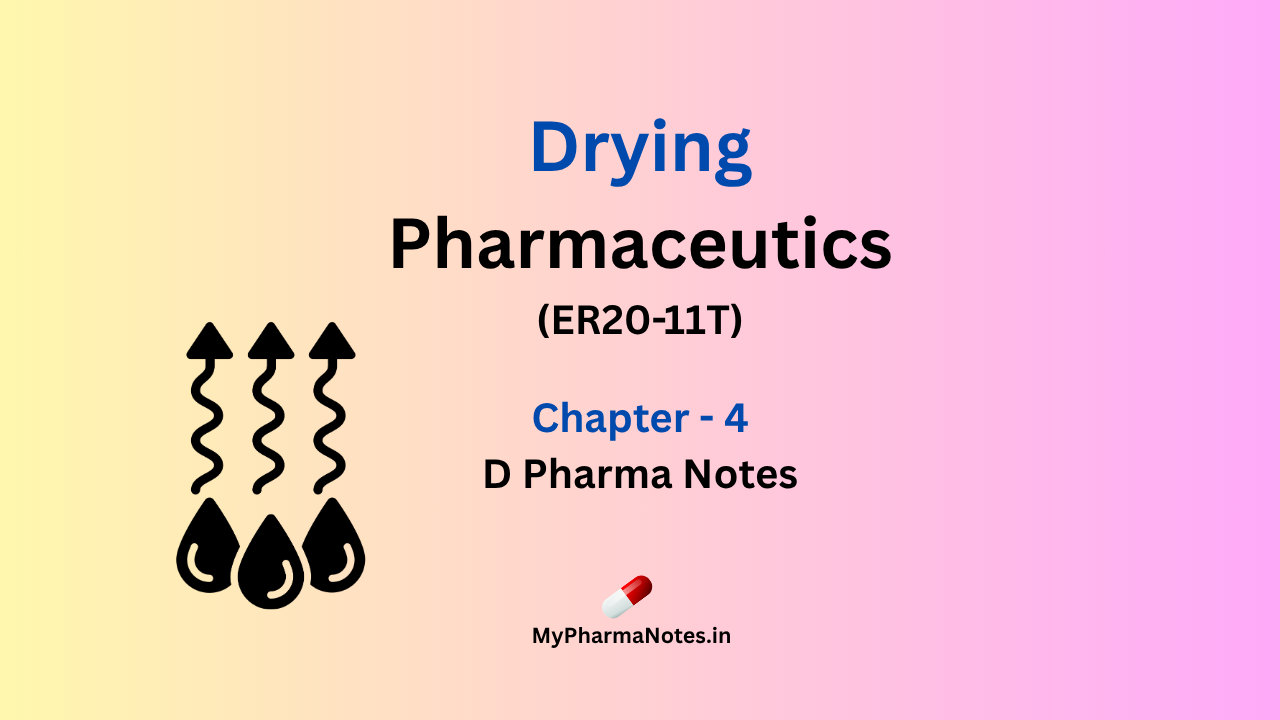Table of Contents
DRYING
- Drying is defined as the removal of small amounts of water or other liquid from a material by the application of heat.
- It is generally mass transfer process in which water or another solvent is removed by evaporation from a solid, semisolid or liquid process.
- Drying is the final stage of processing of bulk drug preparation.
- Drying and evaporation are distinguishable by the relative quantities of liquid removed from the solid. In evaporation, the product obtained is either concentrated solution or suspension or wet slurry. In drying , dry solid is the final products.
- Humidity in the environment is an important determinant for drying of the solids, though several methods are available, thermal methods and freeze drying technique (non-thermal method).
- Liquid to be vaporized may remains on surface of solids, inside the solid, and partly inside and partly outside the solid.
Applications of the Drying
- Drying is necessary in order to avoid deterioration.
- Drying produce materials proper shape, uniform size, and enhance solubility.
- Removal of moisture makes the material light in weight and reduces the bulk, so drying improved the handling procedure.
Classification of dryer used in drying process
- Static bed dryer-In this type of dryer there is no relative movement among the solid particles being dried, although there may be bulk motion of the entire drying mass. Example-Tray dryer, freeze dryer.
- Moving bed dryer-In this type of dryer particles are partially separated so that they flow over each other. Example- Drum dryer.
- Fluidized bed dryer-In this type of dryer solid particles are partially suspended in an upward moving heated gas system. Example- fluidized bed dryer.
- Pneumatic dryer-In this type of dryer particles are entrained and conveyed at a high velocity gas stream. Example- spray dryer.
